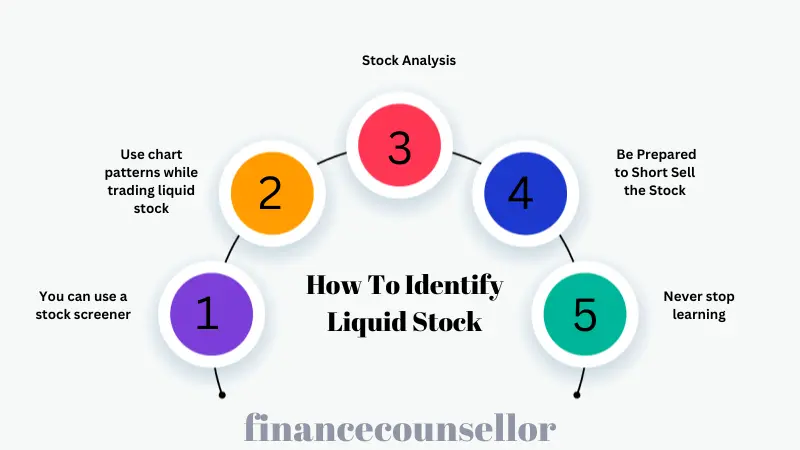Since COVID hit the world, we have seen a rising number of investors around the world. But everybody is so impatient that they want higher returns within the shortest period. For those people, liquid stocks can be a thing. Now you might wonder what is liquid stock and how it works. So this blog is for you.
In this blog, we will discuss what is liquidity and what is liquid stock. We will also discuss some advantages, best liquid funds in 2022 and how to identify liquid stock.
What Is Liquidity?
Market liquidity is a market feature that allows a person or a company to quickly buy and sell an asset without significantly changing the asset’s price in business, economics, and investment. It involves the trade-off between the price of an asset and how quickly it can be sold.
In simple words, liquidity means how quickly you can get cash on your hand whenever you need it.
Liquidity in stock:
The liquidity of a stock is determined by how accessible it is and how easily and quickly it can be bought and sold without impacting the stock’s price. But the stock will have enough demand and supply, buyers and sellers of shares in the market, and transactions can happen smoothly.
What Is Liquid Stock?
A stock is considered to be liquid if it can be sold quickly because many shares are traded each and every day.
I hope now you understand what is liquid stock and liquidity in stock. Now we will discuss some advantages.
Some Advantages Of Liquid Stock?
Superior returns:
Mutual funds have a record of generating higher returns than bank deposits. Bank deposit rates have fallen, but the return on liquid funds has been a steady 7% to 7.5% in the last ten years.
Tax benefits:
Liquid funds follow debt taxation(it refers to the imposition of taxes on the same income, assets and financial transaction at two different points of time). They have a three-year holding period. You receive the benefit of indexation when redeeming after three years. Indexation increases the price of your buy. Your profits decrease as your purchase price rises.
Low risk:
The liquid stock carries a very light risk. It invests in papers which mature in less than ninety-one days. These papers are AAA (it is the highest possible rating that may be assigned to an issuer’s bonds by any of the major credit rating agencies)rated and carry very light default risk. They are generally issued by strong public and private companies and the government.
Real-time price discovery:
The market price of equity funds is not available on Saturdays and Sundays, but the NAV( Net asset value) of liquid funds is available on Saturdays and Sundays. Liquid mutual funds are the only type of mutual fund whose NAV is calculated for one year.
Low expense ratios:
Liquid funds are professionally managed. Fund houses charge a management fee to manage the portfolio, which is a part of the fund’s expense ratio. Portfolio return and expense ratios are inversely related. Liquid funds carry very low expense ratios, and hence they offer higher returns.
Minimum investment:
Liquid funds are better than bank FDs( fixed deposit). Liquid funds are also affordable. You need to invest a minimum of $5000 in a bank FD, but in liquid funds, you can invest $500 via SIP. Hence, liquid funds are pocket friendly.
Perfect for systematic transfer plan:
Liquid funds are also perfect for systematic transfer plans into equity funds. Fund lump sum investments are not suggested because they require market timing. To avoid lump sum investing, systematic transfer plans are preferred by retail investors. A fixed amount is shifted from liquid funds to equity funds.
How To Identify Liquid Stock

Now you know what is liquid stock and the advantages of liquid stock burned into your mind. So how can you find stocks with good liquidity?
Step 1:- You can use a stock screener.
It would be best if you had the right tools for finding good liquid stock. It is an investment for the future. A high liquidity stock screener can help you find the stocks you want. If you are new to trading, start with one free tool.
Step 2:- Use chart patterns while trading liquid stock.
It would be best if you used chart patterns while trading liquid stocks. Stock chart patterns are shapes and lines drawn into price charts to help predict future price actions like breakouts and reversals.
Step 3:- Stock Analysis
It would be best if you learned both fundamental and technical analysis. The majority of losses result from missing a key indicator.
Fundamental analysis is more about the company. How does it work? What are its goods? Will the company release a new product?
Technical analysis is like, “how is the stock behaving? Are there trading patterns forming? Is there enough trading volume?”
A combination of fundamental and technical analysis should be part of your stock analysis
Step 4:- Be Prepared to Short Sell the Stock
It means you borrow shares to sell. The money goes into your trading account when you sell these shares ( borrow shares). When the price goes down, you buy shares at the lower price and pay back the borrowed shares. This strategy is not always available, and it can be dangerous.
Step 5:- Never stop learning.
You have to keep your trading education going. Never stop learning. Learn as if your entire future depends on it.
Best Liquid Stock To Buy Now
| s.no | Liquid stocks |
| 1 | Johnson and johnson (JNJ) |
| 2 | Alphabet (GOOG,GOOGL) |
| 3 | Nike (NIKE) |
| 4 | Mastercard (MA) |
| 5 | Cintas corp. (CTAS)) |
| 6 | Eaton corp. (ETN) |
| 7 | Conocophillips (COP) |
| 8 | Caterpillar (CAT) |
Conclusion
The liquidity of a stock is an important indicator of whether a stock is tradable. Highly liquid stocks can be easily and quickly converted to cash. It could be challenging to find buyers for a stock at the official market price if it is illiquid.
After reading this blog on what is liquid stock, i hope you understand what is liquid stock and how to identify the liquid stock. We also discuss some advantages of liquid stock and the best stock to buy.
Que-1. What are the three types of liquidity?
Ans- There are three main types of liquidity: central bank liquidity, market liquidity and funding liquidity.
Que-2. Why is high liquidity beneficial?
Ans- The ability of a company to fulfil its present liabilities, like debt, without having to borrow money or raise outside capital is referred to as liquidity.
Que-3. What is illiquid stock?
Ans- It is a high-risk stock that cannot be easily and quickly sold or exchanged for cash without loss in value. Illiquid stocks are difficult to sell.


